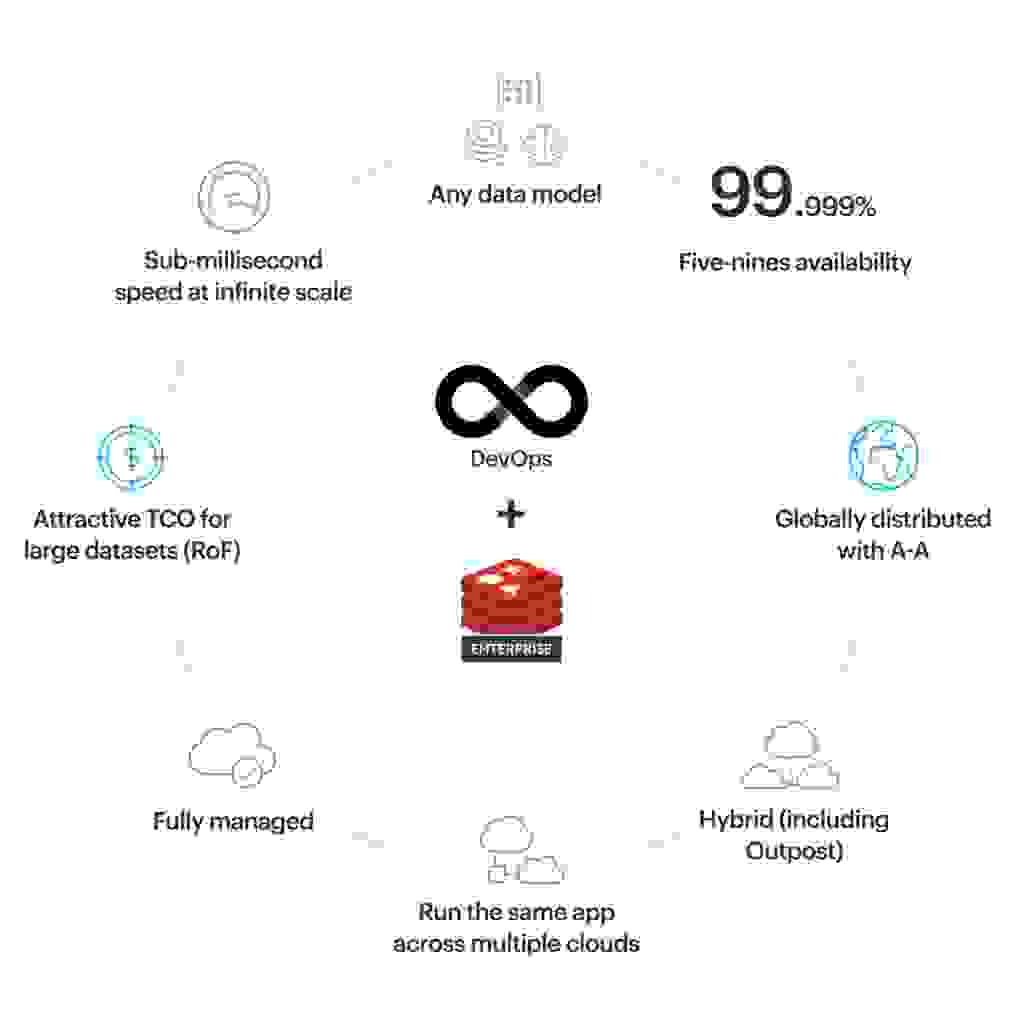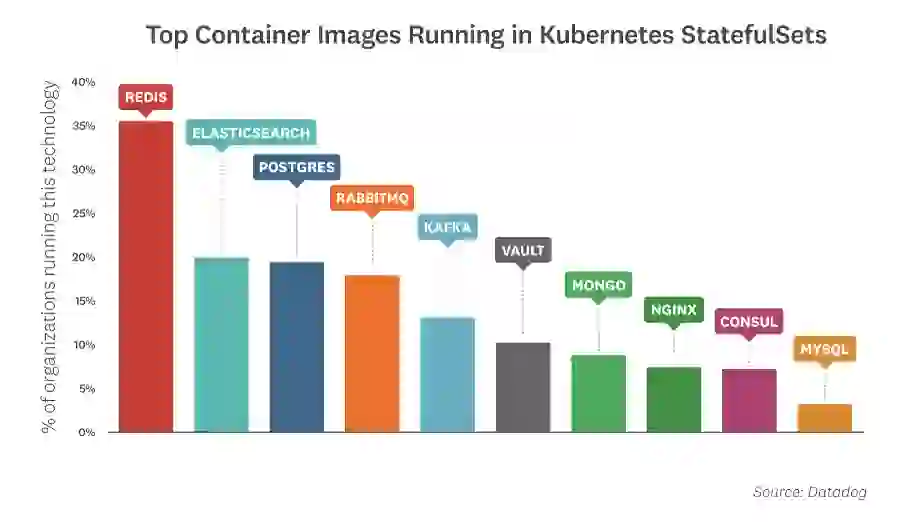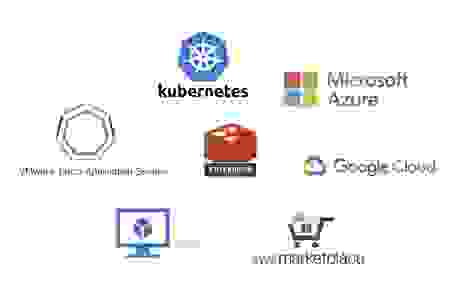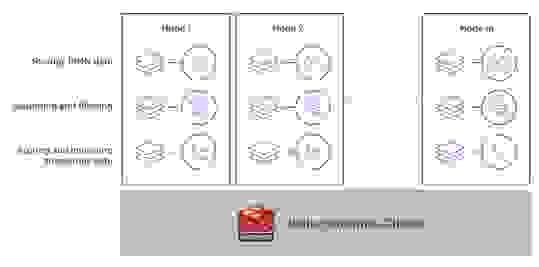
Learn more


In many enterprises, DevOps teams are leading the push toward digital transformation. This journey often begins with application and infrastructure modernization efforts designed to unlock the potential of the digital economy and confront competition that’s only a click away. Application performance lags of just a few seconds can have enormous downstream impact on the customer experience and ultimately the business’ success. For example, if the Gap app doesn’t load instantly or doesn’t give inventory updates within a few seconds, many shoppers won’t hesitate to buy their khakis somewhere else. Simply put, the application’s data processing must be fast enough to keep up with consumers’ demand for real-time performance.
According to an Allied Market Research report, the global NoSQL database market is estimated to reach $22.08 billion by 2026. An increase in unstructured data, demand for real-time data analytics and a surge in application development activities across the globe are the driving factors. Traditional relational databases are often too slow and simply can’t match today’s web-scale demands. They were designed with the intention of scaling vertically and on a single node. Modern distributed, non-relational NoSQL databases were designed from the start to be multi-node and scale horizontally, allowing enterprises to be more agile.
NoSQL databases are perfectly suited for the flexible data storage and manipulation needs of developers and operations teams. DevOps embraces a vision of enterprise technology that integrates traditionally siloed development, operations, and quality assurance departments.Emphasizing communication and cooperation among the various components, DevOps teams focus on ways to automate and integrate development, quality testing, and production of applications and services to reduce their time-to-market.
DevOps teams strive to deploy and manage their databases just like they do application code. Changes to databases are recognized as just another code deployment to be managed, tested, automated, and improved with the same kind of seamless, robust, reliable methodologies applied to application code. Databases are now part of the continuous integration/continuous deployment (CI/CD) pipeline. If the DevOps pipeline doesn’t include the database, it becomes a bottleneck slowing delivery of new features. In fact, DevOps teams integrate databases not only in the development pipeline but also in the overall release pipeline.
Forward-thinking DevOps teams designing applications, including the data layer, seek to satisfy a number of critical requirements:
Redis has become a popular database choice due to its ease of implementation and exceptionally high performance, among other benefits. Most real-time data eventually lands in Redis because of its impressively low latency (less than 1 millisecond). The highest-performing NoSQL database, Redis delivers up to 8 times the throughput and up to 80% lower latency than other NoSQL databases. Redis has also been benchmarked at 1.5 million operations/second at sub-millisecond latencies while running on a single, modest cloud instance. In Datadog’s 2020 Container Report, Redis was the most-popular container image in Kubernetes StatefulSets.
Redis fits very well into the DevOps model due to its ease of deployment, rigorous unit and functionality testing of core and supplementary Redis technology, and ease of automation through tools such as Docker, Ansible, and Puppet. Redis Enterprise is an enterprise-grade, distributed, in-memory NoSQL database server, fully compatible with open source Redis. Redis Enterprise extends open source Redis and delivers stable high performance, zero-downtime linear scaling and high availability. It is uniquely positioned to help DevOps teams meet their goals with less management toil and lower overhead.

So what, exactly, are DevOps teams looking for in Redis Enterprise? Here are the five most important capabilities:
High availability is the holy grail for most DevOps teams, and they often spend immense amounts of time and money to keep their applications running. But failing to recover from a database failure in a timely manner may result in losing data and millions of operations. Redis Enterprise offers uninterrupted high availability, completely transparent to the DevOps team, with diskless replication, instant failure detection, and single-digit-seconds failover across racks, zones, and geographies. It delivers high throughput and low latency even during cluster-change operations such as adding new nodes to the cluster, upgrading software, rebalancing, and re-sharding data.
This unique combination of high-availability technologies guarantees four-nines (99.99%) uptime and five-nines (99.999%) uptime in Active-Active deployments of globally distributed databases. Active-Active geo distribution enables simultaneous read and write operations on the same dataset across multiple geographic locations. Using academically proven conflict-free replicated data types (CRDTs) technology, Redis Enterprise automatically resolves conflicting writes, without changing the way your application uses Redis. It enables a disaster-proof architecture for geo-distributed applications, while also delivering local latency.

In the current technology landscape, the amount of choice available when it comes to platforms is simply astonishing.It’s practically impossible to take the time to investigate every option, so enterprises often stick to platforms that they’re comfortable with, even if they aren’t necessarily the best tools for the task. Part of successfully implementing DevOps involves choosing the best platforms for the unique context of your organization’s environment and the nature of your processes. That’s exactly why Redis Enterprise takes a platform-agnostic stance towards DevOps.
Redis Enterprise software is available on Amazon’s AWS Marketplace, Google Cloud Marketplace, and the Microsoft Azure Marketplace with the ease of single-click deployment. It can be deployed on any virtual machine/bare-metal configuration that supports Linux/RHEL/CentOS operating systems. Redis Enterprise software combined with purpose-built Redis Enterprise Operator is designed to provide enterprise-grade capabilities such as the declarative deployment of clusters and databases within minutes, leveraging Infrastructure-as-Code (IaC); automated cluster-lifecycle management, including upgrade and recovery; high availability with seamless failover; Active-Active deployment across Kubernetes clusters and data persistence. The Redis Enterprise Kubernetes Operator can be deployed across multiple Kubernetes platforms, including RedHat OpenShift, Google Kubernetes Engine (GKE), VMware Tanzu Kubernetes Grid (formerly Enterprise PKS) as well as upstream Kubernetes. (Learn more about the principles we use to deploy Redis Enterprise on Kubernetes on our Why Kubernetes page.)
Redis Enterprise provides a tightly integrated solution with the VMware Tanzu application service. Application developers can natively use the Redis Enterprise Service Broker for VMware Tanzu for launching and managing the lifecycle of their databases/cache systems, and operators can employ a variety of automation tools for managing their Redis deployments with enhanced monitoring capabilities, failure recovery, seamless migration between plans, and seamless software upgrades. (Learn more about the benefits of Redis Enterprise in your Tanzu environment in Pivotal’s Redis Enterprise for VMware Tanzu documentation,)
Redis Enterprise is also a great way to bring more power and flexibility to the CI/CD process. Redis can help distributed development teams release new features safely and roll them back with minimal impact when required.. Learn more about how feature toggles, feature context and error logs can enhance your CI/CD process in this blog post.)
3. Virtually unlimited scalability and high performance
In today’s fast-paced development environment, a well-thought-out preparation strategy for scalability is a must to make the process smooth and easy. Many DevOps failures occur because the underlying infrastructure is unable to scale to meet demand, causing the application to crash. That’s a real issue, because scaling database solutions requires massive additional infrastructure investments as they accrue non-linear overhead in scaled-out environments.
Linear scaling, which means that to get 2x the performance you need roughly 2x the infrastructure, 4x performance demands approximately 4x the infrastructure, and so on, is critical to enable DevOps teams to affordably keep up with fast-growing requirements. Made for DevOps environments, Redis Enterprise fuels businesses that want to rapidly deploy dynamic apps to millions of users at a time. (Learn more about linear scalability in Redis Enterprise here.)
4. Global distribution (with Active-Active geo distribution)
DevOps teams deploy applications that are increasingly built using microservices. These apps leverage a multitude of different component parts, with different approaches to infrastructure, hosted in a variety of different locations, consumed by people everywhere, and distributed on many different platforms.
To support the responsiveness and scalability required by distributed applications, DevOps teams are increasingly looking to innovative database technologies such as geo-distributed data processing to deliver highly interactive, scalable, and low-latency geo-distributed apps. Many are choosing Redis Enterprise as a modern database that can be deployed globally yet provides local latencies for writes and reads, while simplifying resolution of conflicts and enabling strong eventual consistency for datasets.
Whether your environment includes applications running on-premises, in a hybrid cloud, or on multiple clouds—or on a mix of all three—Redis Enterprise’s Active-Active geo distribution promotes high availability and low latency. With built-in active-active database technology based on CRDTs, Redis Enterprise helps DevOps teams achieve high performance across distributed datasets. This significantly reduces the development effort involved in building modern applications that deliver local latencies even when they need to span racks, clouds, or regions.
5. Multi-tenant architecture

In a multi-tenant software architecture, a single instance of a software application(including database) serves multiple tenants . Each tenant’s data is isolated from other tenants sharing the application instance. This ensures data security and privacy for all tenants. When choosing a database for multi-tenant applications, developers have to strike a balance between customers’ need or desire for data isolation and a solution that scales quickly and affordably in response to growth or spikes in application traffic. Hence, to ensure complete isolation, the developer can allocate a separate database instance for each tenant; at the other extreme, to ensure maximum scalability, the developer can have all tenants share the same database instance.
Most developers opt to use Redis Enterprise because it offers software multi-tenancy support. A single deployment of Redis Enterprise Software (often deployed as a cluster of nodes) serves hundreds of tenants. Each tenant has its own Redis database endpoint which is completely isolated from the other Redis databases. As shown in the diagram on the left, there are multiple databases like DB1 for storing JSON data, DB2 for search and filtering, DB3 for storing and analyzing time series and so on.
Rapid deployment is a key element of a successful DevOps approach. Redis Enterprise provides a fast database that helps DevOps teams more efficiently build and operate applications. Redis’ easy-to-learn data structures and modules are flexible enough to cover a variety of use cases—and Redis Enterprise features such as persistent-memory storage and shared-nothing cluster architecture help reduce operational burden. That’s why DevOps teams love Redis as much as developers do.
What are you waiting for? Get started with Redis Enterprise today, it’s free in the cloud or download the software now.